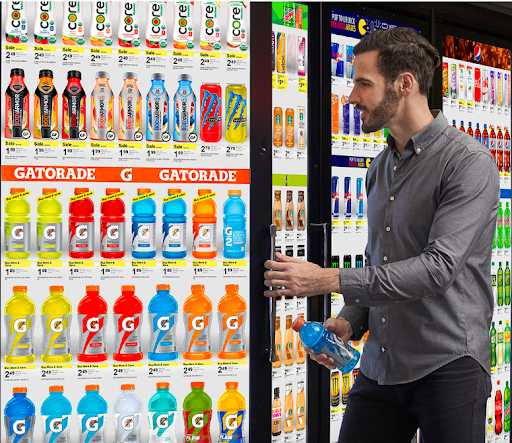NRF 2020: What Did We Learn?

Retail plays an incredibly important role in the global economy. In fact, one recent study found that 31% of global gross domestic product (GDP) is tied to the retail ecosystem.
With so much money at stake, it comes as no surprise that data and technology are increasingly changing the way retailers operate. And much of that evolution was on display in New York City at NRF 2020, the world’s largest conference for retailers, which brought more than 40,000 leading retail professionals together to talk about the future of retail and, more specifically, how technology and data reshaping retail business models.
The event kicked off in a big way, with Microsoft CEO Satya Nadella sharing his thoughts on what the future looks like for retailers during the opening keynote.
Unsurprisingly, Nadella—along with many other industry titans, like Starbucks CEO Kevin Johnson; BJ’s Wholesale Club Chairman and CEO Chris Baldwin; and Crate and Barrel CEO Neela Montgomery, to name a few—were focused on the pivotal role data and technology are playing in the reimagining of retail.
“Data is only useful if you—in real time or near-real time—can predict something better, can automate something better, or can gain an insight,” Nadella said. “Those are the outcomes you want to drive with data. That’s the true success of your data.”
Indeed, data and technology are increasingly taking center stage in the future of retail. With that in mind, let’s take a look at five high-level takeaways we learned at NRF 2020.
1. The rise of intelligent, data-driven retail
Retail is becoming smarter and smarter. In large part, this is due to the fact that 75% of shopping begins online—which leads to 40 petabytes of data being created every hour in the retail ecosystem.
Where is all this data coming from? The end-to-end instrumentation of the supply chain is being driven by low cost sensors and IoT services. The benefits to complete supply chain visibility include more transparent and accurate inventory, reduced spoilage via cold chain management, predictive maintenance and many more.
We’re also seeing in-store digital technology proliferate. These technologies are reducing costs, improving efficiencies with real-time inventory and pricing, and improved store shopper and employee experience.
Let’s take a look at a few of the newer technologies on display at NRF.
Toshiba Smart shelves and cashierless checkout feature multiple technologies on display, including AI based object recognition via the cameras above the shelf. Toshiba also developed a smart fabric to retrofit legacy shelves that can sense when a product is in the proper place, how many there are, when a customer picks one up, when they put it back and more all in real-time.

Digital signage had a significant presence at NRF this year. Multiple companies developed connected smart displays that will lower labor costs, improve checkout accuracy and enable dynamic pricing. Chicago based CoolerScreens’ smart cooler displays are helping connect consumers to brands in new and innovative ways. These displays are fully customizable showing product, dynamic pricing, and even ads (which represent an incremental revenue stream) all instrumented for real-time analytics.

Of course, having data is one thing. Making sense of it is another. To this end, more and more retailers are investing in tools that enable them to leverage all the data they collect—and quickly—to deliver stronger experiences, which tend to translate into more sales. For example, 30% of ecommerce sales are now coming from personalized recommendations. Add it all up, and retailers are increasingly putting data to use just like the tech giants have been doing for years.
2. AI/ML enters the realm of retail
When we think of retail, artificial intelligence (AI) and machine learning (ML) might not be the first things that pop into our heads. But at NRF 2020, we learned that more and more retailers are using AI and ML to get the most out of their data and serve customers better.
Retail companies that want to follow in these footsteps may need to reexamine their underlying database to make sure it’s capable of processing large volumes of data quickly.
3. Empowering employees with the right tools
In the age of data, the HiPPO is dead. In large part, this is because employees increasingly have access to the tools they need to know customers on a deeper level and make data-driven decisions rapidly—without roping in their colleagues or managers.
In the new era of retail, it’s all about giving store employees and managers the right data so they can optimize the customer experience.
4. Stores as communities and experiences
For many retailers, stores are no longer simply stores. Instead, they’re communities and experiences.
Starbucks, for example, calls its stores “the third place”—with home and the office being the other two places. At the same time, companies like Microsoft and Apple are building stores that offer unique experiences that can’t be found anywhere else. What’s more, more and more banks are actually opening in-branch coffee shops for the same reason.
By imagining stores as unique destinations, you give customers more of an incentive to visit instead of simply buying something online.
5. Digital transformation: The vehicle that makes it all happen
All of these trends are enabled via digital transformation—a move away from legacy applications, tools and processes and a shattering of data silos.
This fits in with Nadella’s opening keynote: In today’s fast-paced world, data often has a short shelf life. Businesses that are incapable of seeing the big picture and responding with agility to shifting needs won’t be able to fully capitalize on the right-now economy.
DataStax: Powering top retailers to incredible outcomes
DataStax enables 8 of the top 10 retailers to drive powerful outcomes with data. To learn more about how your retail company can do the same, here are some resources you might want to check out:
- Why Hybrid Cloud Is the Answer for Retailers (blog)
- Agile Ecommerce: Why Retailers Need Adaptable Architectures (whitepaper)
- Top Five Ways Microservices Are Changing Retail (datasheet)
- Macy’s: Why Your Database Decision Directly Impacts Customer Experience (webinar)
- C&S Wholesale: Achieving Seamless Supply Chain Mastery with DataStax Enterprise (case study)




